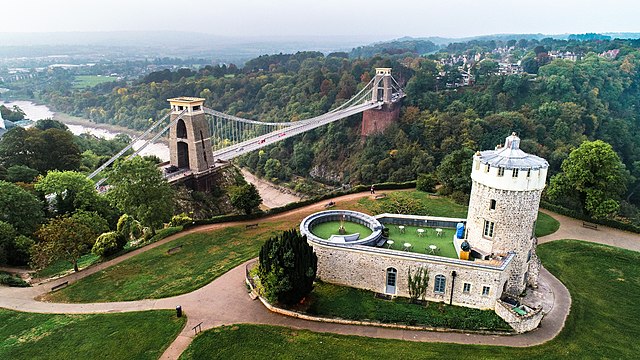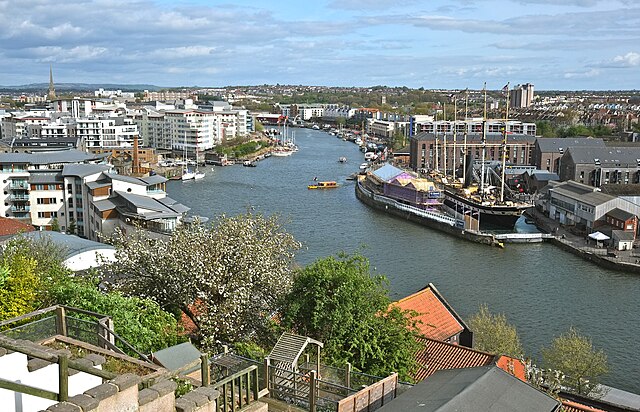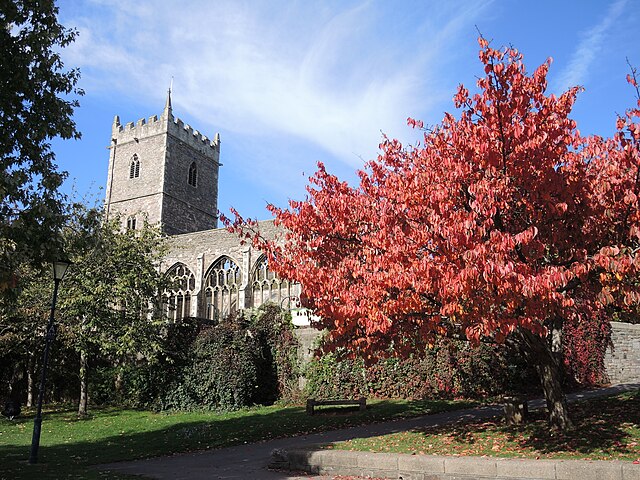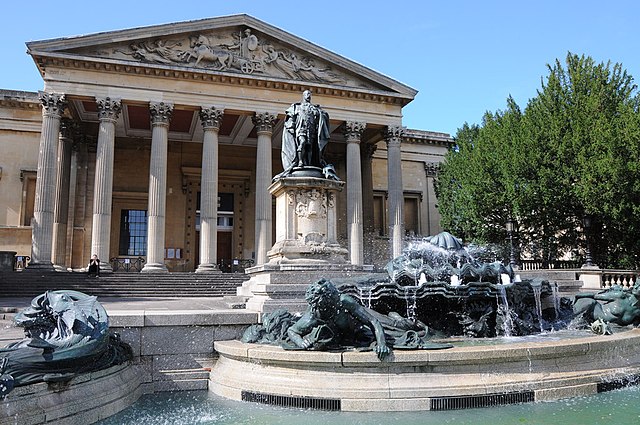Bristol Harbour is the harbour in the city of Bristol, England. The harbour covers an area of 70 acres. It is the former natural tidal river Avon through the city but was made into its current form in 1809 when the tide was prevented from going out permanently. A tidal by-pass was dug for 2 miles through the fields of Bedminster for the river, known as the "River Avon New Cut", "New Cut", or simply "The Cut". It is often called the Floating Harbour as the water level remains constant and it is not affected by the state of the tide on the river in the Avon Gorge, The New Cut or the natural river southeast of Temple Meads to its source.
Bristol Harbour, looking toward the city centre
Black and white etching showing the towers of St Stephen's Church, St Augustine the Less Church and Bristol Cathedral, published c. 1850. The view shows the historic harbour with ten sailing ships and rowing boats before the channel was filled in 1892–1938.
A tall ship in the Cumberland lock, Hotwells, during the 2004 Harbour Festival
The Cumberland Basin
Bristol is a city, unitary authority area and ceremonial county in South West England, the most populous city in the region. Built around the River Avon, it is bordered by the ceremonial counties of Gloucestershire to the north and Somerset to the south.
The county is in the West of England combined authority area, which includes the Greater Bristol area and nearby places such as Bath.
Image: Clifton Suspension Bridge and the Observatory in Bristol, England
Image: Harbour View, Bristol geograph.org.uk 5352614
Image: Autumn colour in Castle Park (geograph 7336500)
Image: Victoria Rooms in Bristol. geograph.org.uk 3690458








